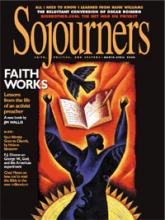Every culture has rituals and devices for telling its people who they are and where they come from. Since the 1700s Americans have used the census as a mirror for reflecting who we are as a nation. Since Census 2000 will arrive on Americas doorsteps on April Fools Daythe traditional day of social role reversalsits worth reviewing who the census says weve been and who it says we are now.
Census 2000 is the first major overhaul of the census questionnaire in 40 years, and it contains some changes in what you will and wont be asked. In the age of artificial insemination and fertility drugs, women for the first time will not be asked how many children they have borne. Eighty years after the Armistice, World War I is dropped as a category of military service. The Persian Gulf war has been added. You will not be asked about your water source or if you have sewage disposal. The top value of American homes will shift from "$500,000 and upward" to "$1 million and upward." Farming as a source of income is now subsumed under generic "self-employment."
The big issues for Census 2000 revolve around our social identity crisisspecifically how we define "race," "ethnicity," and "culture." Since 1977, people have been required to identify themselves on census forms by choosing only one racial groupblack, white, American Indian and Alaskan Native, Asian or Pacific Islander.
Read the Full Article
